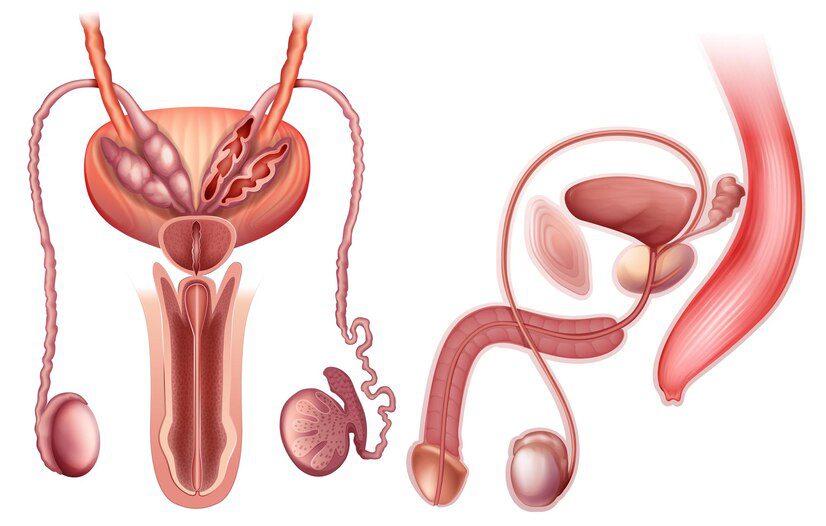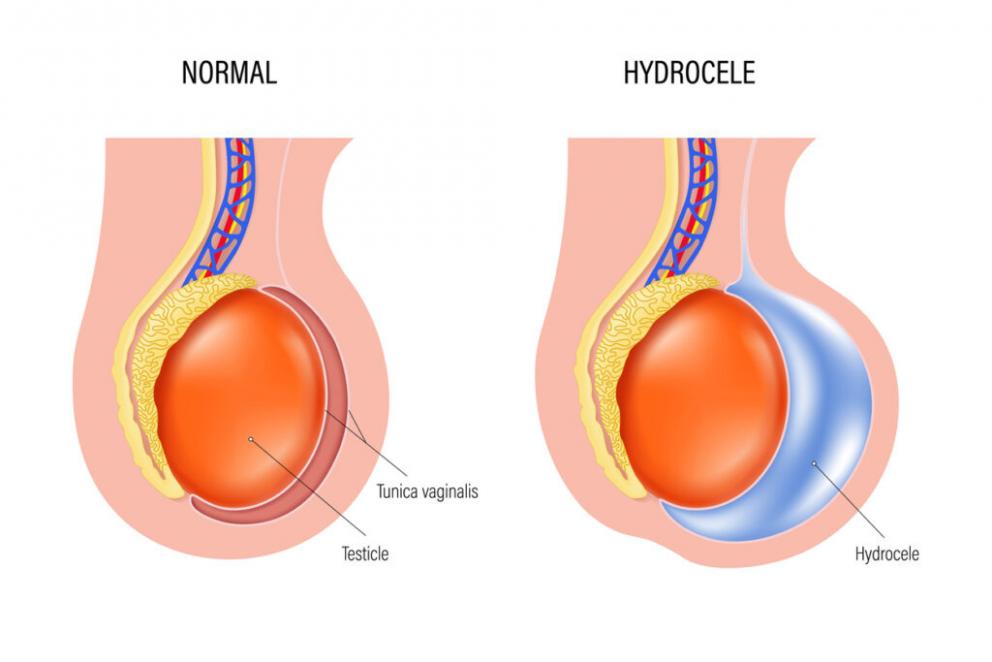Understanding hydrocele
The medical condition, hydrocele, occurs due to swelling in the scrotum, a pouch-like area that holds the testicles. This condition arises from an accumulation of fluid in the tunica vaginalis, a delicate membrane that envelops the testicles. In most cases, a hydrocele is non-cancerous and does not lead to any discomfort. However, if the hydrocele is large, it might create a sensation of heaviness, leading to pain. The size of the swelling may feel heavier or larger in the morning than at night. Most hydroceles happen in babies aged 1 to 2 years and often go away on their own. Chronic hydroceles are more common in adults over 40 and usually need surgery.
If you feel any discomfort or have symptoms related to a hydrocele, you should see a hydrocele specialist right away. To know the best hydrocele doctor near you, search online by typing in ‘best hydrocele specialist near me’. Conduct a thorough review of the clinic’s qualifications, board certifications, experience, expertise, and reputation before making a final choice.
Vijayawada has become an attractive medical destination thanks to skilled doctors, hospitals equipped with advanced medical facilities, and affordable treatment options. Hospitals in Vijayawada cater to the diverse medical needs of patients, ranging from specialised treatments to emergency services. Vijayawada has numerous multispeciality hospitals and clinics, thereby offering a wide range of options for patients to choose from. In this blog, you can find comprehensive information related to Hydrocele, including its definition, diagnosis, surgery, types, treatment options, complications, and more. This blog covers all aspects related to hydrocele treatment in Vijayawada, thereby helping you pick the best hospital/clinic for your hydrocele treatment.
Hydrocele types
Hydrocele is classified into two primary types: primary and secondary.
Primary hydroceles
There are no underlying reasons for them, as they aren’t the result of any injury, infection, or other medical issues. They are not present at birth and may appear in early childhood. The signs of primary hydrocele include enlargement in one or both testicles, a feeling of heaviness or discomfort in the scrotum, and size changes that occur throughout the day.
Secondary hydroceles
The secondary hydrocels develop as a result of inflammation, tumors, or any infection.
Hydrocele diagnosis
When you visit a hydrocele doctor near you, he employs various diagnostic processes to confirm the condition. They include:
Physical examination
The hydrocele specialist examines the scrotum and checks for any swelling and tenderness. Then he performs a transillumination test where a light is placed behind the scrotum. When light shines through the fluid, lighting up the area around it, it indicates that the swelling is caused by a hydrocele. In contrast, if there is a solid formation, such as a tumor, the light will fail to penetrate.
Imaging techniques
The hydrocele specialist prescribes a pelvic ultrasound. This technique makes use of high-frequency sound waves to produce images of the scrotum. Using the images, the doctor will be able to assess any fluid buildup and also rule out other complications such as a tumor or hernia.
Blood tests
You will be advised to undergo certain blood tests and urine tests to rule out the possibility of any underlying infection causing a hydrocele.
Hydrocele treatment
The approach to treating a hydrocele is based on the severity of the symptoms and any complications that may arise. Depending on the individual, the treatment options include monitoring, Hydrocele surgery, or needle aspiration. In babies, a hydrocele frequently resolves without intervention. However, if an adult continues to have a hydrocele, surgical intervention is necessary. Some of the factors that influence Hydrocele treatment are as follows:
- Symptoms
- Age
- Type and size of hydrocele
- Overall health of the individual
Laser Hydrocelectomy
This is the most definitive and advanced treatment option where the hydrocele is excised through surgical intervention. This is a laser-assisted procedure that employs a high-intensity laser beam to drain the liquid present in the scrotal sac. In this case, a Hydrocele specialist makes a small cut in the scrotum to reach the fluid sac. The fluid is then drained, and the sac is either removed or reduced in size to prevent the hydrocele from coming back.
The procedure is done under general/local anesthesia on an outpatient basis, wherein you will be able to go home on the same day of the surgery. This minimally invasive procedure has a high success rate with no to minimal complications. This procedure eliminates any chance of a hydrocele coming back.


Aspiration
A hydrocele specialist recommends aspiration for individuals who are not good candidates for surgery. During this procedure, the fluid in the hydrocele is extracted using a syringe and needle. This serves only as a temporary fix, as the fluid will likely accumulate again. This procedure should not be performed on people diagnosed with testicular cancer. In some cases, it may be used along with an injection of a sclerosing agent such as sodium tetradecyl sulfate. This technique harms the inner layer of the hydrocele sac, which aids in preventing a return of the condition.
Although the procedure seems quite straightforward, it does not offer the benefits of hydrocelectomy. The recovery time for patients operated on using aspiration is quite high owing to the recurrence. On the flip side, aspiration is low-cost and has lower complications than surgery.
Hydrocele complications
Although hydrocele surgery is a relatively safe treatment procedure, certain complications do occur. Some of the risks associated with Hydrocele surgery are:
Infection
The treated fluid sac, if infected, leads to the accumulation of pus, which must be treated immediately.
Testicular atrophy
Rupture of a hydrocele: Over time, the accumulation of fluid in the scrotum leads to excess pressure, leading to the rupture. This is the most frequent complication associated with hydrocele treatment.
Pycocele
A pycocele is a serious condition that occurs due to the accumulation of pus in the sac surrounding the testicle. It required immediate medical treatment. If not addressed, it may result in testicular atrophy or injury.
Infertility
The temperature in the scrotum rises due to the accumulation of fluid in it. This harms spermatogenesis and sperm quality. Studies indicate semen quality decreases by 40 percent with a 1-degree increase in temperature.
Cost of Hydrocele Surgery in Vijayawada
If you are staying in Vijayawada and want to know the cost of hydrocele surgery in India, then you are at the right place. Various elements influence the expenses associated with hydrocele treatment. The main factors that determine the cost of treatment for a hydrocele are the type of surgery and the Hospital or Clinic. Type of anesthesia used (local or general), surgeon fees, complications, pre- and post-operative care, etc. To get a fair understanding of the hydrocele treatment cost, check the following:
Aspiration and laparoscopic surgeries cost between Rs 30,000 and Rs 35,000.
Laser hyderocelectomy surgery costs between Rs 55,000 to Rs 70,000
Leading hospitals for Hydrocele treatment in Vijayawada
Surgikure
Safe and minimally invasive hydrocele treatment from the best specialists in India. The clinic offers exceptional care as evidenced by the positive patient experiences and testimonials. Offer Advanced laser and laparoscopic USFDA-approved surgical procedures.
Kamineni hospitals
Dedicated Urology department with experienced doctors offering advanced and comprehensive care.
Ashoka hospitals
Expertise in surgical hydrocele treatment is delivered by experts in the field.
Unity hospitals
A multispeciality hospital known for offering quality hydrocele treatment.
Sentini hospital
Urologists leverage modern techniques offering good treatment options for hydrocele.
Patient experiences and testimonials
Many patients expressed their happiness and shared gratitude for the surgeons for the smooth hydrocele treatment. One patient noted,” The decision to undergo hydrocele surgery changed my life. The procedure went smoothly, and I am now feeling very light.”
Expert recommendations
Leading hydrocele specialists in Vijayawada stress the tailored approach for hydrocele treatment. For most hydroceles, treatment may not be required, and they will go away on their own. However, large and persistent hydroceles require careful Urologist evaluation to rule out serious conditions.
FAQs
- What is the recovery time following treatment for a hydrocele?
Hydrocele recovery takes only a few days. Most patients will be able to resume normal activities within a few days. - Will I be able to live a normal life with a Hydrocele?
Yes, you will be able to live a normal life with a Hydrocele as it will not interfere with the normal day-to-day activities. - Can a Hydrocele be cured naturally?
In infants, a Hydrocele may go away on its own, but when it is present in adults, it requires medical intervention. - What are the chances of recurrence after a Hydrocele surgery?
If an experienced hydrocele specialist operates on the Hydrocele, the chances of recurrence are extremely low. - What are the potential risks associated with a Hydrocele surgery?
Risks associated with anesthesia, injury to nearby blood vessels, the possibility of infection, hemorrhaging, and the formation of blood clots.
Final thoughts
A hydrocele is a medical condition that is nothing to be worried about. However, early diagnosis and appropriate care help you recover in a short period. If you are experiencing discomfort, do not hesitate to do a simple Google search using the keyword ‘hydrocele specialist near me’ to find an experienced and qualified hydrocele doctor. Shortlist a specialist from the list of available options based on experience, patient reviews, qualifications, and the reputation of the hospital or clinic. List out all your queries related to symptoms, treatment, and complications, and discuss with the hydrocele repair doctor before proceeding to the surgery.



